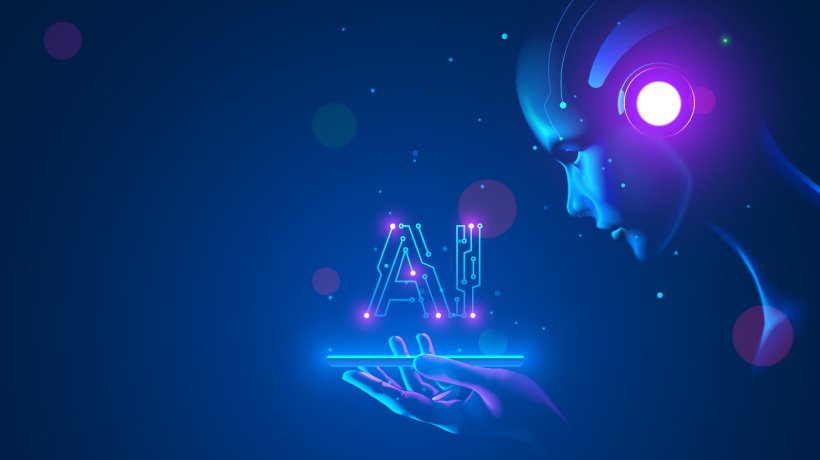Demystifying AI Myths: Separating Fiction From Reality
Artificial Intelligence (AI) has captured the imagination of business leaders and enthusiasts alike. The promises of AI are enticing: increased productivity, enhanced decision-making, and transformative efficiency. Yet, amid the AI fervor, myths and misconceptions have flourished, often clouding our understanding of what AI can truly achieve. In this article, we will demystify these common AI myths and explore how AI substantially impacts businesses today.
Debunking Myths And Misconceptions Around AI
Myth 1: AI Will Replace All Human Jobs
One of the most pervasive myths surrounding AI is the notion that it will ultimately replace human workers across various industries. While AI and automation have already altered the job landscape in some sectors, the truth is far more nuanced. AI is not so much a replacement as it is a tool to augment human capabilities.
Example: Healthcare
Consider the healthcare industry. AI is being used to analyze medical images, assist in diagnosis, and even predict patient outcomes. However, the healthcare professional's role remains essential in interpreting AI-generated insights, making critical decisions, and providing the human touch that patients need. In this way, AI is not eliminating jobs but rather enhancing the capabilities of healthcare professionals.
Myth 2: AI Understands And Thinks Like A Human
AI's portrayal in science fiction has led to the misconception that it possesses human-like understanding and reasoning. In reality, AI doesn't "understand" information like humans do. AI systems excel at processing and analyzing vast datasets, identifying patterns, and making predictions based on statistical models.
Example: Virtual assistants
Virtual assistants like Siri and Alexa can seem conversational but operate on predefined scripts and algorithms. They recognize speech patterns and keywords to respond rather than genuinely comprehend language's meaning. Understanding the difference between human and machine intelligence is crucial when setting realistic expectations for AI applications.
Myth 3: AI Is Always Accurate And Unbiased
AI's objectivity and infallibility are often overestimated. AI systems are only as good as the data they are trained on. Biases present in training data can perpetuate biases in AI outputs, and algorithms can make errors.
Example: Facial recognition
Facial recognition technology has been criticized for biases, especially in relation to gender and race. Identifying individuals from underrepresented groups has often been less accurate, highlighting the importance of addressing data bias in AI applications.
Myth 4: AI Is Too Expensive For Small Businesses
It's a common myth that AI is a luxury only affordable for large corporations. While AI implementation can be costly, it's not exclusively the domain of big players. As the AI landscape evolves, more cost-effective solutions and tools are becoming available for businesses of all sizes.
Example: Chatbots with no-code development
Many small businesses now leverage AI-powered chatbots, often created using no-code platforms, to enhance customer service. These chatbots can handle routine inquiries, freeing up human employees to focus on more complex tasks. The cost of implementing such a chatbot, especially when using no-code solutions, can be considerably lower than hiring additional customer support staff.
Myth 5: AI Is A One-Size-Fits-All Solution
Another myth is the belief that AI can be applied universally across all industries and business processes. In reality, AI solutions need to be tailored to specific business needs and objectives. A generic approach may not yield the desired results.
Example: Retail vs. healthcare
The AI algorithms used for inventory optimization in the retail sector fundamentally differ from those used for medical diagnosis in healthcare. Each industry requires custom solutions for its unique challenges and data sources.
Myth 6: AI Can Replace Human Creativity
While AI can be incredibly creative in generating content and ideas, it doesn't possess the depth of human creativity and intuition. AI's creative output is often based on patterns and data rather than genuine inspiration.
Example: Art and music
AI-generated art and music have gained attention but are often based on patterns observed in existing works. They can be tools to assist human artists, but they are not substitutes for the depth of human artistic expression and emotional connection.
Myth 7: AI Is A Standalone Solution
The idea that AI can operate in isolation is a misconception. AI systems are most effective when integrated into existing business processes and workflows. They work in tandem with human expertise to deliver optimal results.
Example: Customer Relationship Management
In customer relationship management (CRM), AI can provide valuable insights into customer behavior and preferences. However, human sales and support teams are crucial for building relationships and providing personalized, empathetic interactions. The synergy of AI and human effort is what drives success.
Myth 8: AI Is Ready To Solve Every Business Problem Today
The rapid advancement of AI has fostered the belief that it can instantly solve all business challenges. However, AI implementation is a process that requires careful planning, testing, and adaptation. It may take time to achieve the desired outcomes.
Example: Predictive maintenance
AI-driven predictive maintenance systems can help reduce downtime and save costs in manufacturing. However, collecting and analyzing data, refining algorithms, and integrating the solution seamlessly into existing operations takes time. The benefits may not be fully realized until the system is mature.
Myth 9: AI Will Only Benefit Tech-Savvy Industries
There's a misconception that AI's benefits are limited to technology-centric industries. In reality, AI has the potential to enhance operations and decision-making in a wide range of sectors, including those traditionally considered less tech-savvy.
Example: Agriculture
AI is being used in agriculture to optimize crop management, predict disease outbreaks, and increase yield. This application demonstrates that AI's impact extends far beyond tech-heavy industries.
Myth 10: AI Is A Fad
Some view AI as a passing trend that will eventually fade away. However, the widespread adoption of AI in various industries suggests otherwise. AI's capabilities will evolve and become more deeply ingrained in business practices.
Example: eCommerce recommendations
AI-driven product recommendations have become standard in eCommerce platforms. This widespread application demonstrates AI's lasting influence on the way businesses operate.
Conclusion
In the age of AI, it's crucial to distinguish between myth and reality. While AI offers remarkable business potential, it's important to approach it with a clear understanding of its capabilities and limitations. AI is not a one-size-fits-all solution nor a replacement for human ingenuity. Instead, it's a powerful tool that, when properly harnessed, can augment human expertise and drive innovation in diverse industries.
As businesses navigate the complexities of AI implementation, they must do so with a grounded perspective, making informed decisions about how AI can best serve their unique needs and objectives. By demystifying these common myths and embracing AI as a partner in progress, businesses can unlock their full potential and remain at the forefront of innovation in the ever-evolving landscape of Artificial Intelligence.








![AI As Your Next Team Member: Shifting From Tool To Talent For Smarter Decision-Making [eBook Launch]](https://cdn.elearningindustry.com/wp-content/uploads/2025/01/AI-As-Your-Next-Team-Member-Rethink-AI-In-Business-Strategies.jpg)